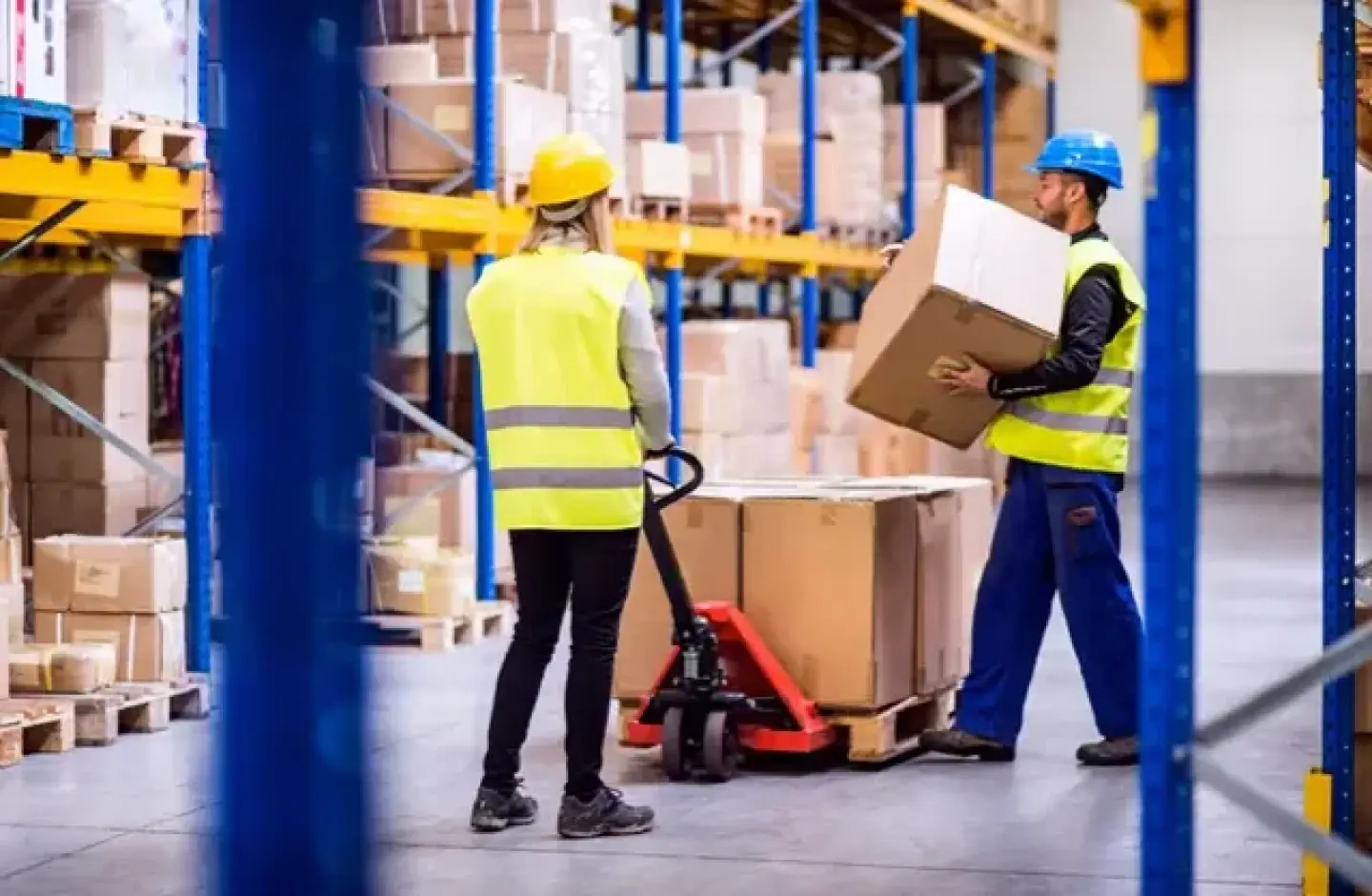Automated warehouse picking technologies are solutions to the warehouse manager’s quest for greater accuracy and efficiency. Traditional manual picking, while once the norm, poses challenges that can hinder optimal performance. From the inevitability of human errors to the constraints of reduced speed and efficiency, the need for a transformative solution has never been more pressing.
Click Here: Boost Your Warehouse Efficiency With This Advanced and Affordable WMS
In this blog post, we’ll explore these challenges and delve into seven cutting-edge automated warehouse picking technologies that promise to revolutionize the way warehouses operate.
Challenges Faced in Manual Picking
Manual picking has long been a cornerstone in warehouse operations. However, as the demands on supply chains intensify, the challenges inherent in manual picking affect the efficiency of traditional warehousing practices. Here are some of the challenges faced in manual picking.
1. Picking Errors
One of the most significant challenges in manual picking is the inevitability of picking errors. Humans, despite their skill and dedication, can make mistakes. From picking the wrong items to miscounting quantities, these errors can lead to shipping mistakes, customer dissatisfaction, and damage to a warehouse’s reputation.
2. Reduced Speed and Efficiency
In today’s fast-paced business landscape, where orders can flood in at any moment, manual picking faces a critical obstacle—reduced speed and efficiency. The physical movement of human workers navigating through the warehouse to locate and retrieve items takes time. As demand surges, quick and efficient operations become essential for meeting customer expectations.
3. High Labor Costs
Manual picking processes heavily depend on a workforce, contributing to high labor costs. Assembling and managing a large team to meet order fulfillment demands can strain a warehouse’s budget, impacting overall cost-effectiveness.
4. Dependency on Workforce Availability
Manual picking operations are inherently tied to the availability and physical capabilities of the workforce. Challenges such as sick leave, breaks, and variations in workforce availability can disrupt the consistency of warehouse operations, leading to potential delays.
5. Risk of Injuries
Manual picking operations are inherently tied to the availability and physical capabilities of the workforce. Challenges such as sick leave, breaks, and variations in workforce availability can disrupt the consistency of warehouse operations, leading to potential delays.
As warehouses grapple with these challenges, the need for innovative solutions becomes increasingly evident. In the next segment, we’ll explore how automation is emerging as a transformative force, offering solutions to these challenges and shaping the future of warehouse management.
Types of Automated Warehouse Picking Systems
The manual approach to picking makes way for innovative automated systems that promise heightened efficiency, accuracy, and overall operational excellence. Let’s explore seven cutting-edge automated warehouse picking systems that are reshaping the way goods are picked and processed.
1. AS/RS (Automated Storage and Retrieval Systems)
AS/RS systems combine automated storage and robotic retrieval, optimizing vertical space within the warehouse. These systems enhance efficiency by minimizing the time needed to locate and retrieve items.
2. AGVs (Automated Guided Vehicles)
AGVs are mobile robots that navigate predefined paths within the warehouse, transporting items between storage and picking locations. These autonomous vehicles reduce reliance on human labor for material movement, providing a flexible and efficient solution for goods transportation.
3. Workflows
Workflow automation is a software that can help you systemize and enforce warehouse processes, including picking. From creating tasks to notifications and more, all without additional human intervention. It relies on rule-based logic to carry out routine tasks.
For example, once an order arrives, a workflow can automatically create tasks for warehouse staff to pick the ordered items. It can also send notifications to the warehouse staff so they are aware of the task created. After the staff picks the items, the system can automatically update the cargo status and send an email to the customer that the items have been picked.
4. Pick-to-Light
Pick-to-Light systems use lights to indicate the location and quantity of items to be picked. This visual guidance speeds up the picking process and minimizes errors by providing clear instructions to warehouse operators. This technology is particularly beneficial in environments with a high volume of small-sized items or where rapid order fulfillment is essential, such as in e-commerce and retail distribution centers. Additionally, it can be optimized using software to ensure the most efficient picking path and minimize travel time.
5. Voice Directed Picking
Voice-directed picking systems take a hands-free approach by utilizing headsets to verbally guide workers through the picking process. This technology enhances efficiency and accuracy while allowing seamless communication between the system and the warehouse worker.
6. Vision-Based Picking
Vision-based picking systems leverage cameras and image recognition technology to identify and locate items within the warehouse. This advanced technology enhances accuracy, speeds up the picking process, and provides a high level of automation in the identification of items.
7. Cobots (Collaborative Robots)
Cobots, or collaborative robots, work alongside human pickers, assisting with various tasks in the picking process. This collaboration enhances overall efficiency while maintaining flexibility and adaptability in warehouse operations.
Advantages of Automated Warehouse Picking Systems
The adoption of automated warehouse picking systems promises increased efficiency and a myriad of advantages that redefine the landscape of order fulfillment. Let’s delve into the key benefits that automated picking systems bring to warehouses, paving the way for a more streamlined and error-free operations.
1. Minimized Errors
Automated picking systems significantly reduce errors in the order fulfillment process. By leveraging advanced technologies such as computer vision and robotics, these systems enhance accuracy in item selection and minimize the risk of shipping mistakes.
2. High Order Accuracy
With minimized errors comes a natural byproduct—high-order accuracy. Automated picking systems ensure that the right products are picked in the correct quantities, reducing order discrepancies and, consequently, increasing customer satisfaction.
3. Increased Efficiency
Automation brings a remarkable boost to the speed and efficiency of the picking process. Automated systems, whether utilizing workflows, robots, or voice-directed picking, operate seamlessly to fulfill orders at a pace that surpasses traditional manual methods.

4. Reduced Labor Costs
Automation brings a remarkable boost to the speed and efficiency of the picking process. Automated systems, whether utilizing workflows, robots, or voice-directed picking, operate seamlessly to fulfill orders at a pace that surpasses traditional manual methods.
5. Scalability for High-Volume Operations
Automated picking systems are inherently scalable, making them well-suited for high-volume operations. Whether facing seasonal peaks or periods of rapid growth, these systems can efficiently handle increased order volumes without compromising performance.
6. Enhanced Worker Safety
Automation improves worker safety by minimizing the physical demands and potential risks associated with manual picking tasks. This shift towards a safer working environment fosters employee well-being and reduces workplace injuries.
7. Optimized Space Utilization
Automated storage and retrieval systems, such as AS/RS, optimize vertical space within the warehouse. This results in a higher density of stored goods, efficient space utilization, and a reduction in the overall footprint required for storage.
8. Continuous Operation
Automated picking systems operate 24/7 without breaks, ensuring continuous and uninterrupted warehouse operation. This continuous operation is crucial for meeting customer demands promptly and maintaining a competitive edge in the market.
What Types of Products are Best Suited for Automated Warehouse Picking?
Automated warehouse picking works best for products that are similar in size, shape, and weight. Some examples include electronics, medicine, books, and clothes. It’s also good for products that are in high demand and need to be shipped quickly. The ideal products for automated warehouse picking are those that can be easily sorted, stored, and retrieved by the system without people needing to intervene.
Safety Concerns and Regulations
Implementing an automated warehouse picking system can significantly improve the efficiency and productivity of a business. However, it’s crucial to consider safety concerns and regulations when adopting such a system. While automated systems are designed to minimize physical demands and risks, certain safety measures must be in place to ensure the well-being of employees and the integrity of the products being handled, such as implementing a warehouse management system (WMS) for efficient management and product traceability.
One of the critical safety measures is providing proper training to employees who work with the automated system. This includes training on equipment operation, emergency procedures, and handling of hazardous materials if applicable. By providing comprehensive training, employees can work more efficiently and safely.
Regular maintenance of the equipment is also crucial to ensure that the automated system operates smoothly and safely. This can include routine inspections, cleaning, and repairs as needed. A well-maintained system can help prevent accidents and ensure that the system operates at optimal efficiency.
Another safety measure is implementing safety protocols to prevent accidents. This may include setting guidelines for traffic flow, restricting access to certain areas, and implementing emergency stop procedures. By doing so, businesses can minimize the risk of accidents and protect their employees and products from potential harm.
Moreover, complying with any relevant safety regulations and standards set by local authorities or industry organizations is essential. This includes guidelines for equipment maintenance, emergency stop protocols, and proper handling of hazardous materials if applicable. By being compliant with safety regulations, businesses can create a safe working environment and protect their employees and products.
Finally, it is essential to regularly assess and update safety measures as technology advances and new regulations are introduced. Staying informed about industry best practices and collaborating with experts in warehouse automation can help ensure compliance and mitigate potential risks.
By prioritizing safety in the implementation of an automated warehouse picking system, businesses can maximize efficiency and productivity while safeguarding their workforce and the products they handle. It’s a balance between harnessing the benefits of automation and maintaining a secure working environment.
Conclusion
As the demands on warehouses continue to grow, embracing automated warehouse picking technologies becomes not just a choice but a necessity. The advantages of minimizing errors, increasing efficiency, and optimizing operational costs position these technologies as the future of warehouse management.
By adopting these automated solutions, warehouses can overcome the challenges posed by manual picking, paving the way for a more streamlined and competitive future.
For more information about automating warehouse operations or the latest warehouse technologies trends, you can follow us on LinkedIn, YouTube, X, or Facebook. If you have other inquiries or suggestions, don’t hesitate to contact us here. We’ll be happy to hear from you.











